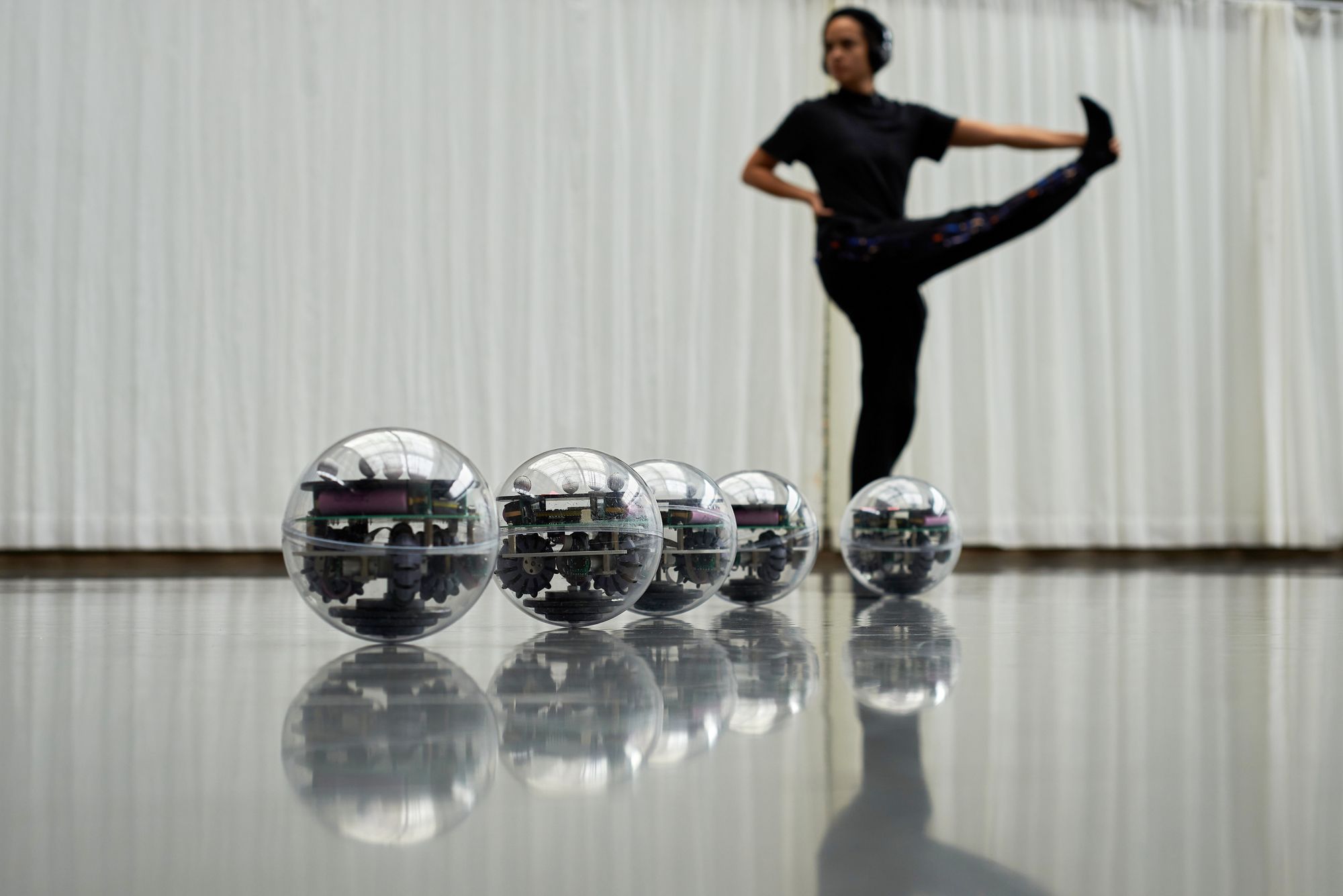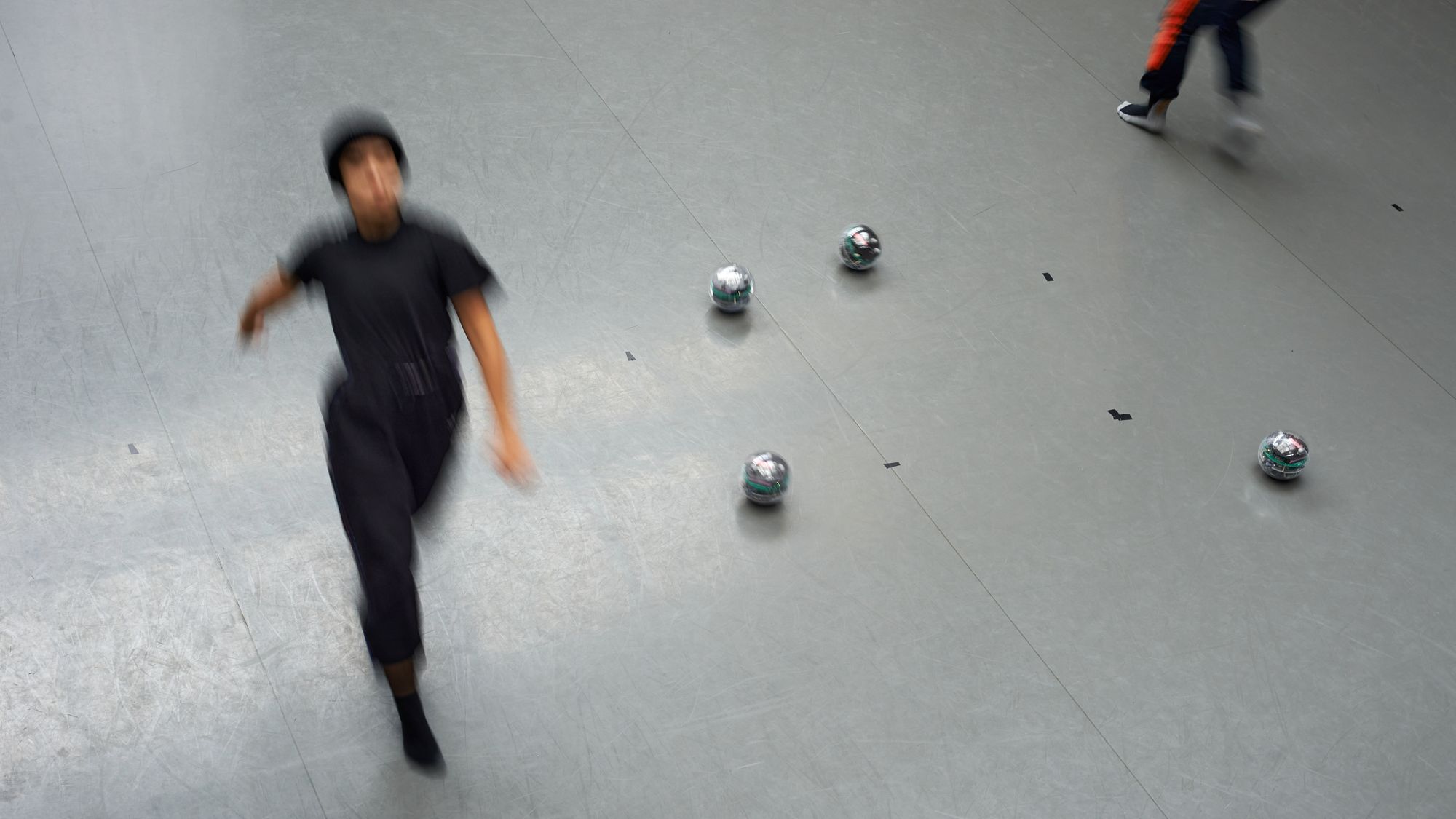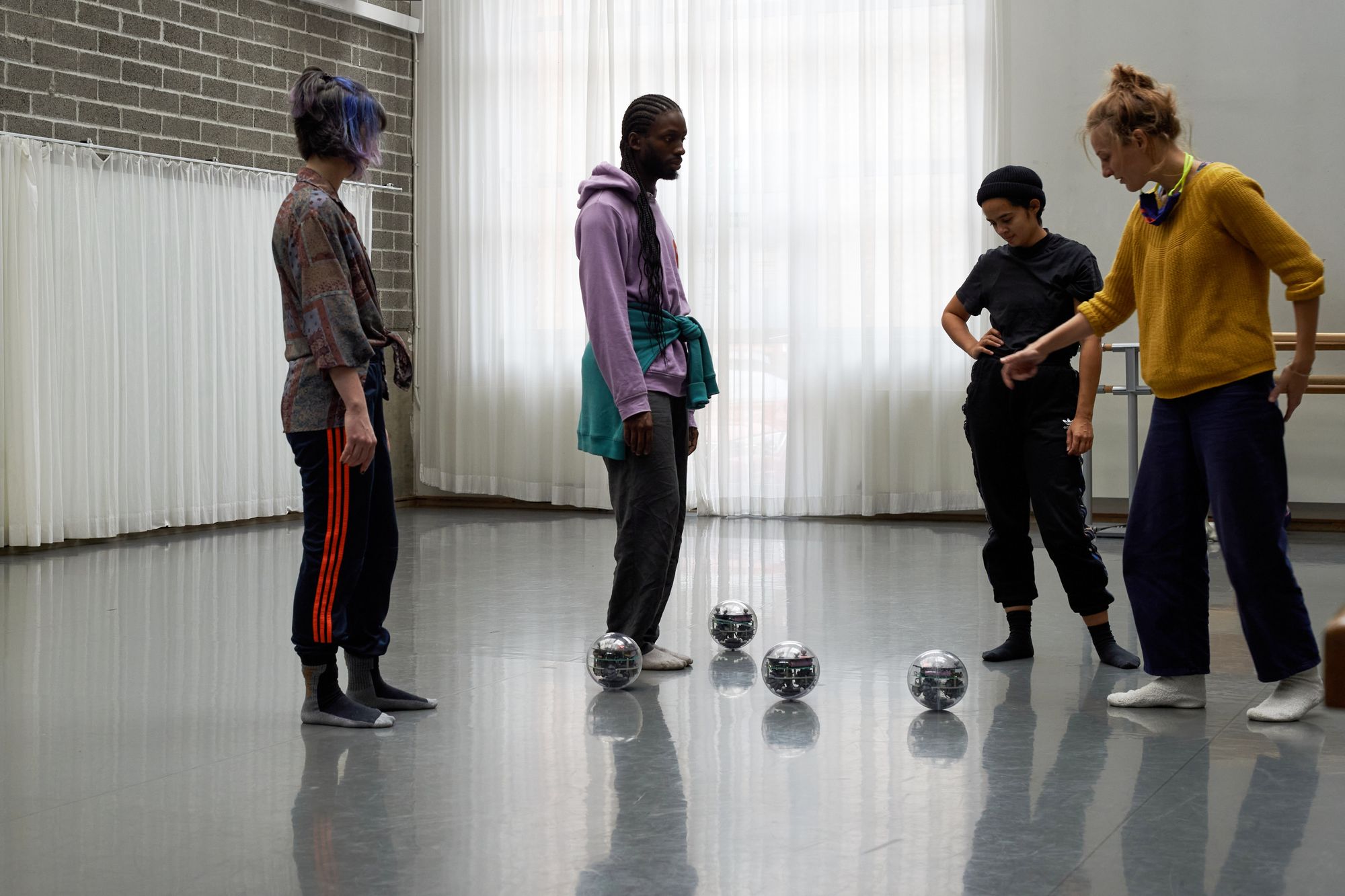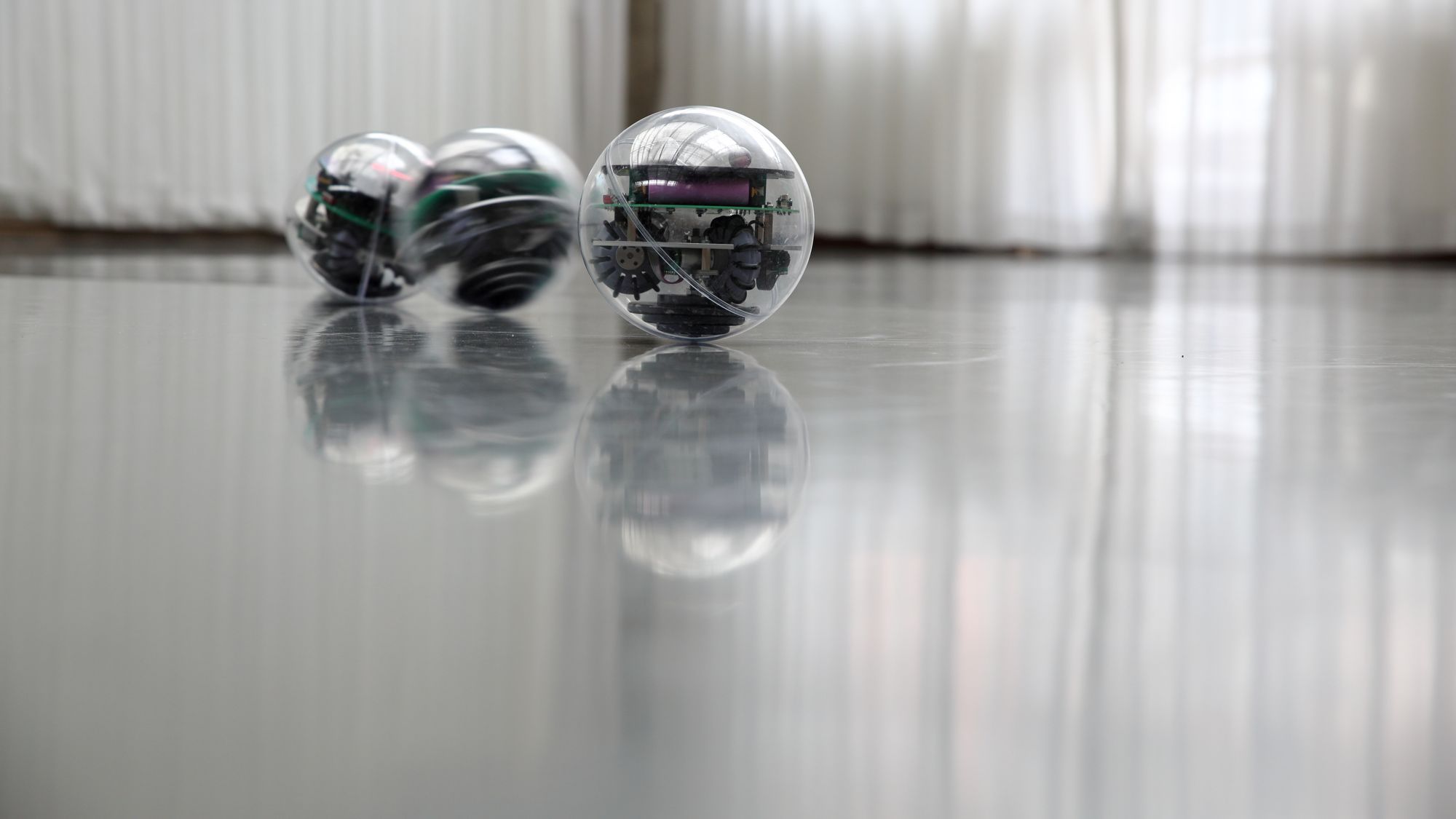Can performers, audience and technology interact with each other in a symbiotic manner? Charlotte Triebus has been working on answering this question for the past three years. With ‘Spheres’ (2020), the artist created a choreographic installation as an interface between intimacy, communication, and artificial intelligence. The installation enables two performers and up to twelve intelligent spheres to interact with as well as react to each other.
The installation focuses on the dialogue between human beings and technology and on the question how movement can be transformed in different bodies by means of interaction, approaching and coincidence. In a 30-minute performance, the dancers interact with the spheres through their movement and positioning. During this time, the spheres and the performers debate with each other and develop a shared form of communication and interaction. For the performers, the artist designed distinctive movement sequences, which she calls ‘poses’. These are inspired by several native calibration gestures. Movement, interaction, and communication of the spheres are based on different swarm principles that were implemented by means of several algorithms and various sensors. This results in a graphic and explorative study on movement, communication, and agency.
Physical touching, interacting, and communicating are interdisciplinary research topics. Against this background, digitization and robotics offer an enhancement of our own perception but also the possibility to reflect on our own actions. Therefore, project ‘Spheres‘ aims at artistic exploration of the symbiotic interaction between dancers and robotic agents. Instead of robots that imitate human movements or vice versa, the artist poses the question of whether robots also possess their own agency on the stage.
The planned artistic performance aims at using interdisciplinary research questions concerning agency, multimodal interaction, and the dialogue between humans and technology to create a performative experience. It is designed to encourage visitors to discuss the topic of communicating with intelligent objects that are able to act. For this purpose, several research questions focusing on art and technology are considered, such as :
Do robots have an own agency on the stage, and how can their abilities and those of the human performers be used equally?
In what way does this influence our perception of the dancers and the whole event?




